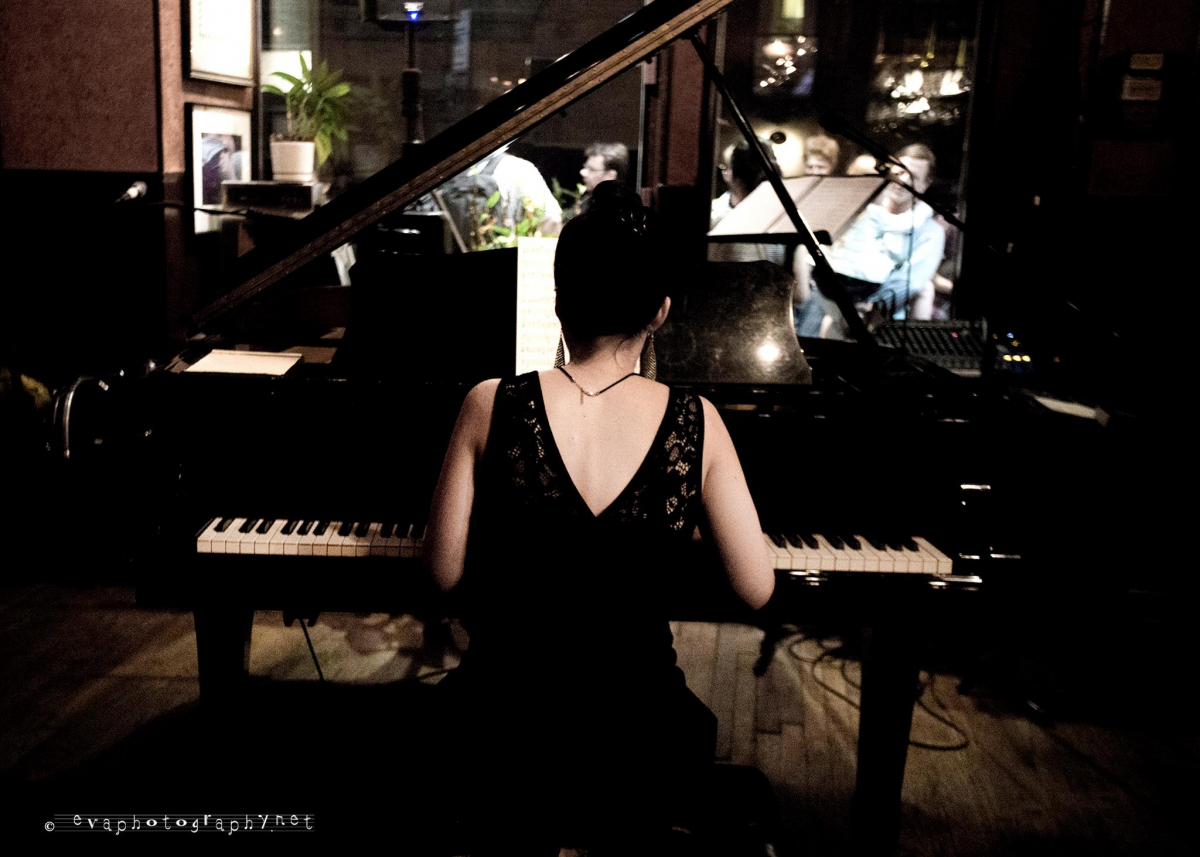
Tania Stavreva, Piano
Music by Steve Holtje & Others
Caffe Vivaldi, NYC
22 June 2018
Erik Satie may have pursued a simple approach to classical music, even boasting that he lacked musicianship, but the Frenchman's music is stunning in its evocative beauty. Composer Steve Holtje's miniatures recall Satie's approach, especially when using the Gymnopedie form that Satie invented,while never diminishing the music's dynamics nor beauty, much like the Haiku and Tanka poetry forms he set (using English translations by Kenneth Rexroth and Jane Hirshfield of Japanese poets including Fumiko Nakajo and Akiko Yosano) -- and, occasionally, wrote himself -- for many of his moving songs. And as played by the gifted classical pianist Tania Stavreva with help from vocalists Jayanthi Bunyan, Nikolett Pankovits, and Jason Hill, it was an unforgettable evening. To reinforce the point, after starting the show with some of her own compositions, she played Satie's timeless Gnossienne No. 4 before launching into Mr. Holtje's compositions. But the evening was made even more poignant by the mere fact that one of New York City's most cherished music venues only had one day left before closing forever thanks to yet another greedy Big Apple landlord. Truly sad that after 35 years on Jones Street this favorite haunt of Bohemians, artists, and patrons would be shuttered forever.
To my ears, there is almost an improvisational quality to Satie's music that makes one lean in and really pay attention. But it was still simple and concise and, in the "able" hands of Ms. Stavreva, lyrical and beautiful. Some critics have suggested that he's the godfather of ambient music. I asked Mr. Holtje if Satie was a fan of haiku. "I don't know. But Asian influence in turn-of-the-century Paris was strong in both art and music."
Mr. Holtje's confluence of his music and his seventeen-syllables poetry is irrefutable. And his collaboration with the extremely gifted Miss Stavreva seemed the perfect pairing. They met after one of her recitals in 2011. "I reviewed one of her concerts (for CultureCatch) and heard her play Satie. It was a natural impulse to send her my Gymnopedies, and fortunately for me, she liked them and premiered them in 2013."
But why base his latest compositions on haiku? According to Holjte: "About 2010 I started trying to strip my music down to the barest of essentials. It became highly concise as a result. Haiku seemed both a good match for my new style (though I should emphasize that it wasn't SUCH a drastic break as I had this impulse in my music all the way back in the '80s) and an inspirational example. But also Kenneth Rexroth's translations of Japanese poetry have been favorites of mine for decades, formative of my taste in poetry."
Holtje's music is cinematic. It reminds me of George Winston's compositions as well as Keith Jarrett -- according to Holtje, "Two people whose music I love for its lyricism. It all goes back to Bill Evans, of course. But I would cite two bigger influences on my music: Catalan composer Federico Mompou, for both conciseness and post-Impressionist harmony, and American jazz pianist Richie Beirach, who expanded on Evans's style with even lusher harmony (and, not coincidentally, he is also a Mompou fan whose cover of the first piece in Mompou's Musica Callada cycle interested me in Mompou). As for 'cinematic,' I have composed two soundtracks, and love how vivid music can conjure moods and mental images."
What would he hope his audience walks away with from his music and words?
"Beauty and a sense of shared humanity across time and cultures. An appreciation for the complexity and/or richness of experience to be found even in short and simple things."
The plan is to present a more formal evening at a larger venue before the year's end. The performers are also going into the studio in July to document this repertoire. Stay tuned for future details.
